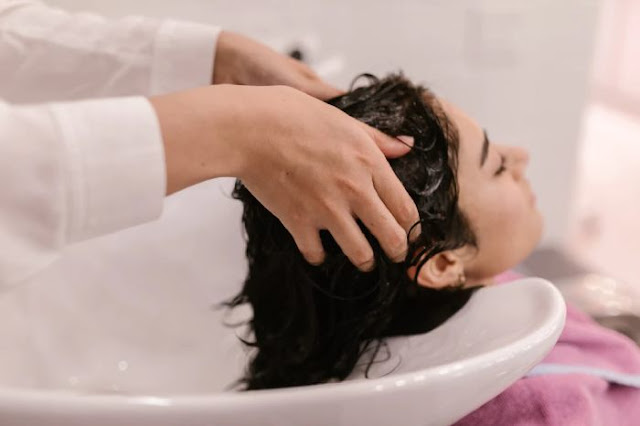Featured
- Get link
- X
- Other Apps
The Role of AI-Powered Virtual Beauty Consumer Product Preferences Analysis

AI-Powered Virtual Beauty Consumer Product Preferences Analysis
In the realm of beauty and cosmetics, understanding consumer
preferences is paramount for creating successful products and marketing
strategies. As technology continues to advance, AI-powered virtual beauty
consumer product preferences analysis has emerged as a transformative tool that
enables brands to delve deep into consumer preferences, providing insights that
drive innovation and personalization. This article delves into the significance
of AI-powered virtual beauty consumer product preferences analysis, its
benefits, methods, and its impact on the beauty industry.
Understanding AI-Powered Virtual Beauty Consumer Product
Preferences Analysis:
AI-powered virtual beauty consumer product preferences
analysis leverages the capabilities of artificial intelligence, machine learning,
and virtual reality to analyze consumer behavior, preferences, and interactions
with beauty products. This analysis provides brands with data-driven insights
into what products resonate most with consumers, enabling them to tailor their
offerings and marketing strategies accordingly.
Benefits of AI-Powered Analysis:
Data-Driven Insights: AI-powered analysis goes beyond
surface-level trends by analyzing vast amounts of data. This provides brands
with deep insights into consumer preferences, helping them make informed
decisions.
Personalization: Understanding individual preferences allows
brands to create personalized product recommendations, enhancing the shopping
experience and increasing customer satisfaction.
Innovation: By identifying emerging trends and consumer
preferences, AI-powered analysis fuels innovation in product development,
enabling brands to stay ahead of the curve.
Efficiency: AI automates the analysis process, significantly
reducing the time and resources required to gain insights from consumer data.
Targeted Marketing: With a clear understanding of consumer
preferences, brands can create targeted marketing campaigns that resonate with
their audience, leading to higher engagement and conversion rates.
Methods of Analysis:
Image Recognition: AI algorithms can analyze images and
videos shared by consumers on social media platforms, identifying trends in
makeup styles, colors, and products.
Virtual Try-Ons: Virtual reality platforms enable consumers
to virtually try on makeup products. AI can analyze the choices consumers make
during these try-ons, providing insights into preferred shades and styles.
Purchase History Analysis: By analyzing consumers' purchase
histories, AI can identify patterns and preferences, enabling brands to make
personalized recommendations.
Social Media Monitoring: AI can monitor social media
platforms for mentions, comments, and interactions related to beauty products,
helping brands gauge sentiment and preferences.
Survey and Feedback Analysis: AI can analyze survey responses and feedback to uncover consumer preferences and pain points, informing product improvements.
Impact on the Beauty Industry:
AI-powered virtual beauty consumer product preferences
analysis has had a profound impact on the beauty industry.
Tailored Products: Brands can create products that align
with consumer preferences, reducing the risk of launching products that do not
resonate with the target audience.
Personalized Experiences: AI enables brands to offer
personalized recommendations and experiences, fostering stronger connections
with consumers.
Rapid Adaptation: As trends evolve, brands can quickly adapt
by analyzing real-time data on consumer preferences, ensuring their offerings
remain relevant.
Reduced Waste: By producing products that consumers truly
desire, brands can reduce excess inventory and waste, contributing to
sustainability.
Challenges and Future Prospects:
While AI-powered virtual beauty consumer product preferences
analysis offers numerous benefits, challenges include data privacy concerns and
ensuring that AI models are free from biases.
In the future, AI analysis is likely to become even more
sophisticated. With advancements in AI algorithms and integration with other
technologies, the accuracy of predicting consumer preferences will continue to
improve, leading to more targeted and effective product strategies.
Conclusion:
AI-powered virtual beauty consumer product preferences
analysis is reshaping the way the beauty industry understands and caters to
consumer preferences. By harnessing the capabilities of AI and virtual reality,
brands can gain valuable insights into individual preferences, enabling them to
innovate, personalize, and create products that truly resonate with their
target audience. As technology continues to advance, this analysis will remain
a pivotal tool for brands seeking to thrive in an increasingly competitive and
dynamic beauty landscape.
- Get link
- X
- Other Apps
Popular Posts
Why Is It Important To Shampoo Your Hair?
- Get link
- X
- Other Apps
Danielle Jordan tells her Story of Flattering Successful on YouTube
- Get link
- X
- Other Apps

Comments
Post a Comment